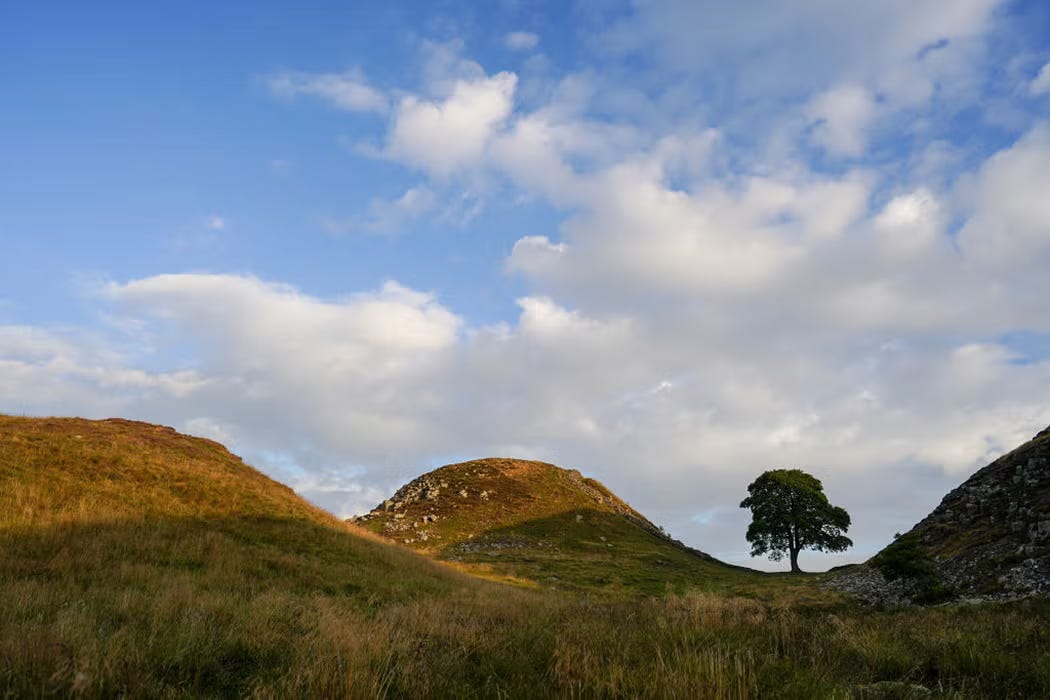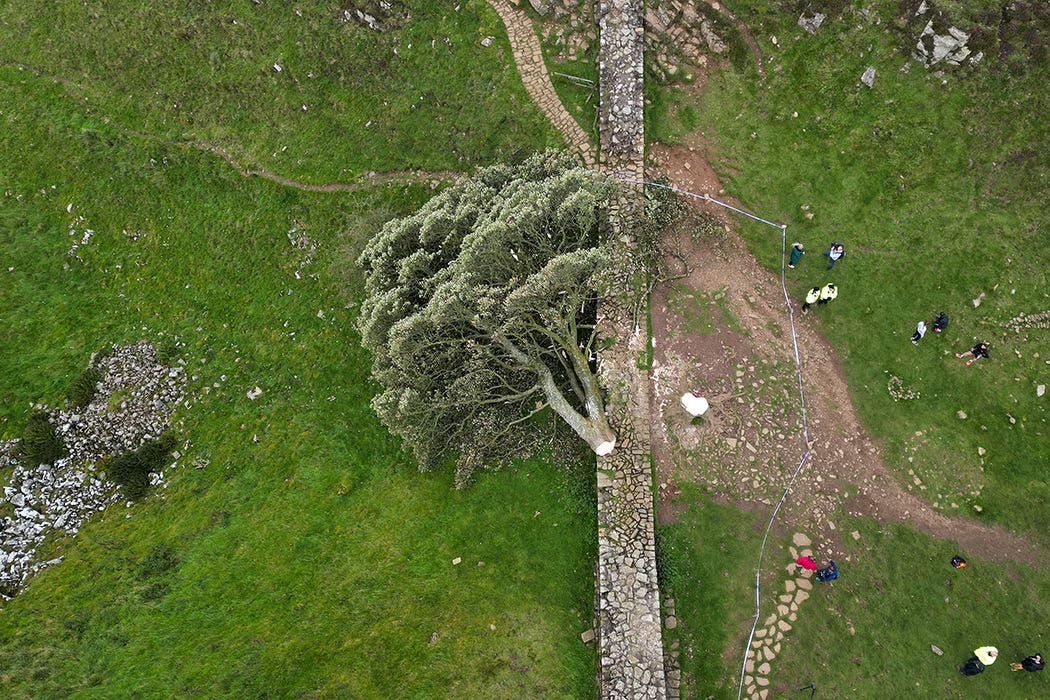This newsletter presents a small collection of geographic, historical, archaeological, cultural and/or artistic articles that have caught my attention. As a fantasy writer, I am fascinated by the nooks and corners of our real world and constantly find inspiration for my own world building and storytelling — it’s my hope that these newsletters are an inspirational resource for other writers, too, or for anyone who wants to learn more about our world.
It’s been a while since we have visited the Forest of Distraction together! I guess I have just been distracted (lolz). For those of you who have joined me since I last wandered this way, here’s a little reminder of what inspired these journeys in the first place.1
It feels appropriate that the theme of this edition of The Forest of Distraction is actual trees. I love trees; with their roots sunk deep into the earth and their branches stretching skyward, they embody a balance within the natural world that I can only aspire to. I know, too, that trees aren’t really eternal, but their longevity makes them feel that way from our perspective, sheltering in their (not-so) silent regard generation after generation of humans and other animals.
“When one plants a tree they plant themselves. Every root is an anchor, over which one rests with grateful interests, and becomes sufficiently calm to feel the joy of living.”
— John Muir
In my last Inky Archive, I shared a link about some famous trees in New York City, but by and large it is a shame that, in our mostly-urban environments, we have lost a real connection with the gentle giants. There is really lovely tree right outside my bedroom window in my new home, but I haven’t a clue what kind of tree it actually is. I am resolved to solve the mystery this week, and learn the identity of the many other trees in our neighborhood as well.2 Trees give us so much — the least I can do in return is to learn their names.
The importance of trees in world culture (past and present) is the subject of today’s first item, in a reflection on the criminal felling of the Sycamore Gap tree in England two years ago. Be warned: the image below is graphic and may make your heart break. Then we’ll meet a couple specific kinds of trees that have adapted to their environments in surprising — and in one case deadly — ways.
Do you have a favorite tree? I’d love to hear about it — share your love in the comments!
“It Was Just a Tree”
We can understand the felling of the Sycamore Gap tree through this complex lens of mythological, literary, and religious resonance. It was an act of vandalism not just toward the tree itself, but toward the cultural heritage and folkloric narratives it carried. As Robert Bringhurst writes, “stories are epiphytes: organisms that grow on other organisms, in much the same way staghorn ferns and tree-dwelling lichens…grow on trees.” To destroy a revered tree is to metaphorically sever a limb from the body of our cultural memory. As such, it has been the case throughout history that public outrage regarding the destruction of an important tree is underscored by a recapitulation of its folkloric and symbolic meaning.
In 1765, a tree planted in colonial Boston became a rallying point for the Sons of Liberty, who protested British rule by hanging effigies of officers from its branches and giving speeches. This recalls a pre-Christian tradition of trees used as points of assembly where, as historical geographer Della Hooke writes, diviners and enchanters gathered to “stave off terrors, appease their anxieties, pour out their desires of their hearts, to seek comfort and help in sadness.” Such was the importance placed on the tree for mobilizing resistance that in 1775, it was cut down by British soldiers to demoralize the revolutionaries. Founding father Thomas Paine would later write a poetic eulogy to the tree, adapted in revisions to fit “all popular revolts against autocratic government.”
Read more: An Untimely Death at Sycamore Gap
The Dragon’s Blood Tree
One version of the local legend surrounding its origin says it grew from the blood of two brothers fighting to the death; another that it was created from the blood of a dragon that was injured fighting an elephant. It’s an odd and alien-looking tree, with thick, knotted branches sprawling out to form an umbrella-shaped covering. These skyward-facing leaves collect condensation from the mists that roll along the clifftops and high plateaus of the interior. The trunk is thick and gnarled but, when sliced open, it bleeds a resin of deep crimson; the blood, perhaps, of the injured dragon.
Mohammed Abdullah has known the trees his whole life. His extended family, which now numbers nineteen, live in a small community in the center of the island, far from the coast and surrounded by rich, fertile soil. He looks after the nearby dragon’s blood trees, and once or twice a year he harvests their resin.
It has a variety of uses. Some are medicinal—it’s said that after childbirth, a woman should mix the resin with water and drink it down. It’s also used to paint clay and pottery and as nail varnish and makeup. “The tree is the most important thing on the island,” says Mohammed, indicating a more visceral connection. “It’s a part of us. The shade never goes away all day long, because of the shape.”
Read more: Can Socotra, Yemen’s ‘Dragon's Blood Island,' be saved?
Little Apple of Death
There’s no safe way to approach a manchineel tree, as every part of it is toxic. One touch is enough to cause severe skin irritations and eye injuries that can leave you temporarily blind. Simply standing under a manchineel tree while its raining can even cause pain. It’s also a bad idea to burn its lumber, as the smoke is harmful as well.
The manchineel’s fruit is just as dangerous, and may even cause death. Some symptoms of ingesting it include:
Blistering and swelling around the mouth and throat that can make it hard to breathe or swallow
Cardiovascular issues, such as low blood pressure
Digestive tract damage
Vomiting
Abdominal bleeding
Dehydration
Read more: Just Touching the World’s Most Dangerous Tree Could Send You to the Hospital
Source unfortunately unknown.
The trees lining the street are jacarandas, I know! It makes me unreasonably excited for next May when they bloom.







The outside-the-bedroom tree? Photograph one of its leaves and post it. I am sure we can narrow it down if not establish it entirely.